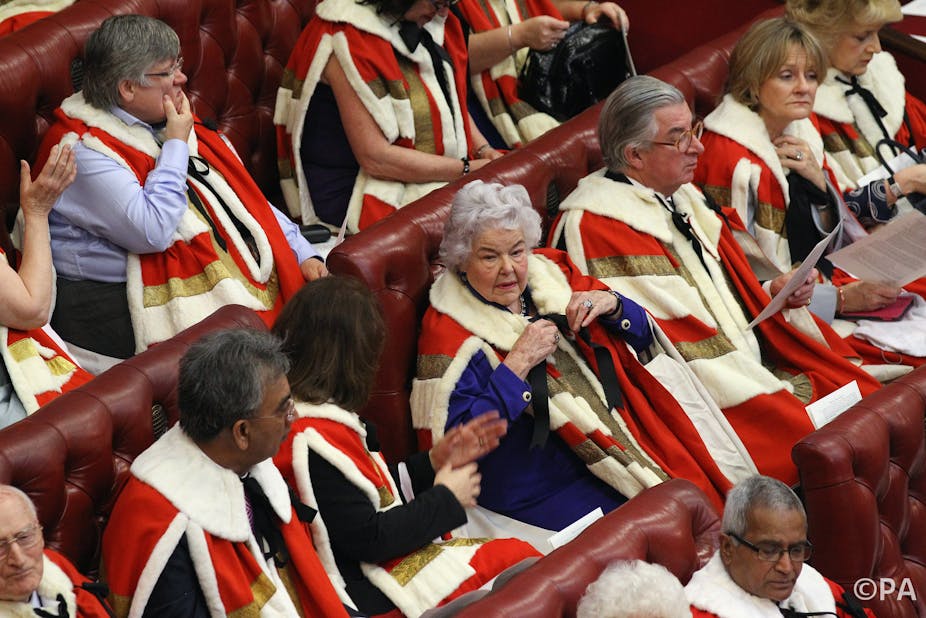It didn’t feature in the last Queen’s Speech and the chances are it won’t feature in the next one, but this government has a chance to complete the process of democratising the House of Lords that started in 1999 and has been a work in progress since.
For more than a century, there have been many attempts at reform of the House of Lords of which only a few have been successful. Many ambitious reforms have fallen by the wayside but successes include the limitation of the House’s power by the Parliament Acts of 1911 and 1949 (allowing it only to delay and not to block legislation), broadening membership through the introduction of female and life peers and the abolition, by the House of Lords Act 1999, of the right of most of the hereditary peers to sit in the house.
All of these have strengthened the legitimacy, perception and performance of the House of Lords. Last month saw another rare success, the House of Lords Reform Act 2014, reach the statute book but without further reform it may have negative consequences.
Reform process
The House of Lords Act 1999, which saw the expulsion of all but 92 hereditary peers, was supposed to be the first stage in reform. They were left to act as a catalyst for the government to seek consensual reform including the full removal of hereditary peers, originally intended within five years.
Subsequently, numerous radical White Papers came to nothing, most recently Nick Clegg’s ill-fated bill in 2011, but the House of Lords Reform Act 2014, colloquially referred to as the Norton-Steel-Byles Bill, will see minor reforms introduced on the sixth attempt at passing various incarnations of that bill.
The act affects the membership of the House in three ways. When it comes into force in the summer it will allow members of the House of Lords to resign their membership voluntarily; it will remove those who fail to attend any sitting during a parliamentary session (which would have accounted for some 10% of the House in 2012/13) and, as of now, it expels those convicted of an offence and sentenced to at least a year in prison.
Chamber hopping
The bill does not, however, end the system of by-elections which maintain the number of hereditary peers at 92 nor does it provide for the appointment of a statutory appointments commission to govern the appointment of peers. It also lacks a full prohibition on “chamber hopping”, where membership of the Lords could be seen as a training ground or temporary berth for future MPs. This is something which the former senior diplomat Lord Jay feared, should such a risk arise, would “be serious for the role of this House and for our constitution”.
The difficulties with chamber hopping are particularly evident when considering the Upper House in the Republic of Ireland. There, senators are elected by parliamentarians, local councillors and university alumni, with no vote given to general members of the public, which creates a more political house than in the UK. As there is no limit on chamber-hopping, a senate seat is often seen as the beginning of a promising political career or as a reward for a loyal member of the lower house after a lifetime of service. This has inevitably led to a diminishing of the esteem in which the upper house is held. A further stark example can be seen in Canada.
While the new act does prevent a peer from returning to the Lords once he or she has resigned, a number of peers and academics have expressed concern about hopping from the Lords to the Commons. This could be addressed in the new session.
Further reform is not likely to be in the Queen’s Speech, but the former speaker, Lady Hayman, is expected to re-introduce a bill ending the hereditary peer by-elections and introducing a statutory appointments commission, rather than leaving appointments in the hands of the prime minister.
Both aspects featured in earlier versions of the bill just passed. The “Hayman” bill could thus address any problem of chamber hopping through the terms of the operation of the appointments commission as it could, as many previous reform proposals have suggested, require a cooling-off period between membership of either House.
An opportunity
However, the Hayman bill also presents an opportunity, through a very small addition, to go a step further and complete the reform started in 1999. Such an evolutionary reform of the House could keep the size of the membership regularly in check (as opposed to the small reduction expected through the retirement and disqualification provisions in the Norton-Steel-Byles Bill) while injecting a democratic element much sought after by reformers. It would also retain most of the virtues of the current House in stark distinction with the Nick Clegg’s shelved bill which proposed a slow destruction and creation of a new chamber.
A system of indirect election of existing peers could constitute a far simpler reform than the radical restructuring formerly proposed by Clegg. It would achieve many of his objectives while maintaining the expertise, experience and even diversity of the current House of Lords. The number of crossbench peers would be fixed at, say, 200, with the number of party peers determined by recent general or other election results. As with the 1999 reforms, the peers would vote among themselves to fill their party or crossbench allocation (but with such votes occurring after each election) making it a far less political system than in Ireland.
After 15 years of waiting, the last two sessions of the Coalition government could see significant incremental, and possibly through such a compromise even final, reform of the House of Lords.

